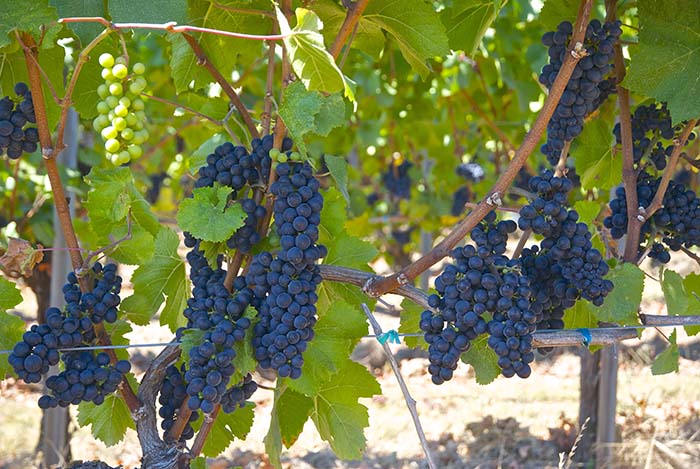It might have seemed a bit impetuous to some when David Lett founded The Eyrie Vineyards and planted the Willamette Valley’s first Pinot noir grapes in early 1965. Luckily, his gamble paid off and Oregon has become one of the new frontiers of modern wine making. While many are toasting to fifty years of wine making success in the industry, many vintners are looking to the future. Hoping to plan and prepare to insure another successful fifty years.
One of the many concerns vineyard owners are looking at is the change in temperature. Making wine is a very volatile process; much like Goldilocks and the Three Bears everything must be just right. Looking at the current trends in climate change wineries are seeing that some of the land used to grow their grapes might not be as viable in the near future. This is leading many to consider the types of grapes they are growing and possibly look at bringing in different strains.

Current projections in a study done by the Proceedings of the National Academy of Science found that the area suitable for wine-grape growing is threatened and becoming more scarce. They project that by 2050 such terrain will decrease by between 19% and 62%, under a business-as-usual carbon emissions scenario, and between 25% and 73% if carbon emissions increase, which some argue is more likely. Even the U.S. government’s National Climate Assessment states, “The area capable of consistently producing grapes required for the highest quality wines is projected to decline by more than 50% by late this century.” Many wineries are faced with the hard truth that they will either have to plan and adapt to the changing environment or go the way of the dinosaur.
This may (for the time being) work in Oregon’s favor. Over 58% of wine-grapes grown in the Willamette Valley are Pinot noir which is also the majority strain grown in Burgundy, France. But France is seeing a significant increase in climate temperatures which may reduce the amount of viable land they have to grow on. This may contribute to increased desire for our lands and climate. Also, since we are seeing slight temperature increases many vintners are considering planting Syrah grapes in the future which grow well in a warmer climate.
Facing the challenges of climate change within the wine industry will prove to be a difficult task. We are fortunate to have such a mild and generally forgiving climate but who knows how long that will last. We must do what we can to ensure that we can keep this important cultural and economic resource alive and well. No matter what type of grape is grown in the Willamette Valley now is the perfect time to explore the wide variety of wineries and wines produced in our state. Celebrating fifty years of wine making in Oregon and with some luck another fifty years to come.
